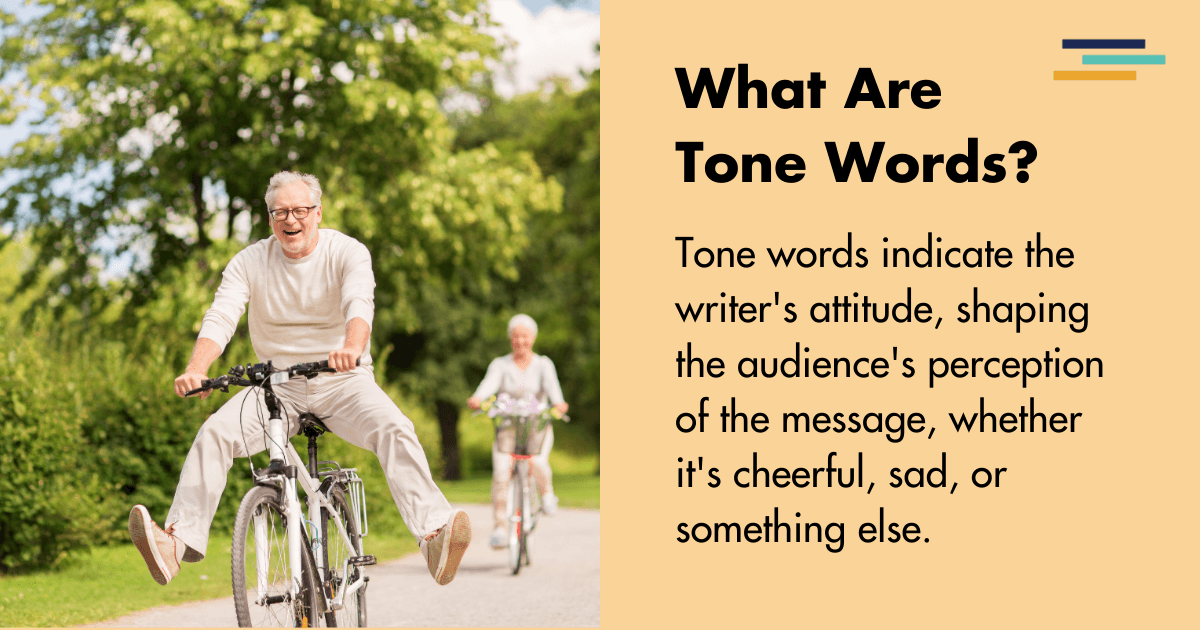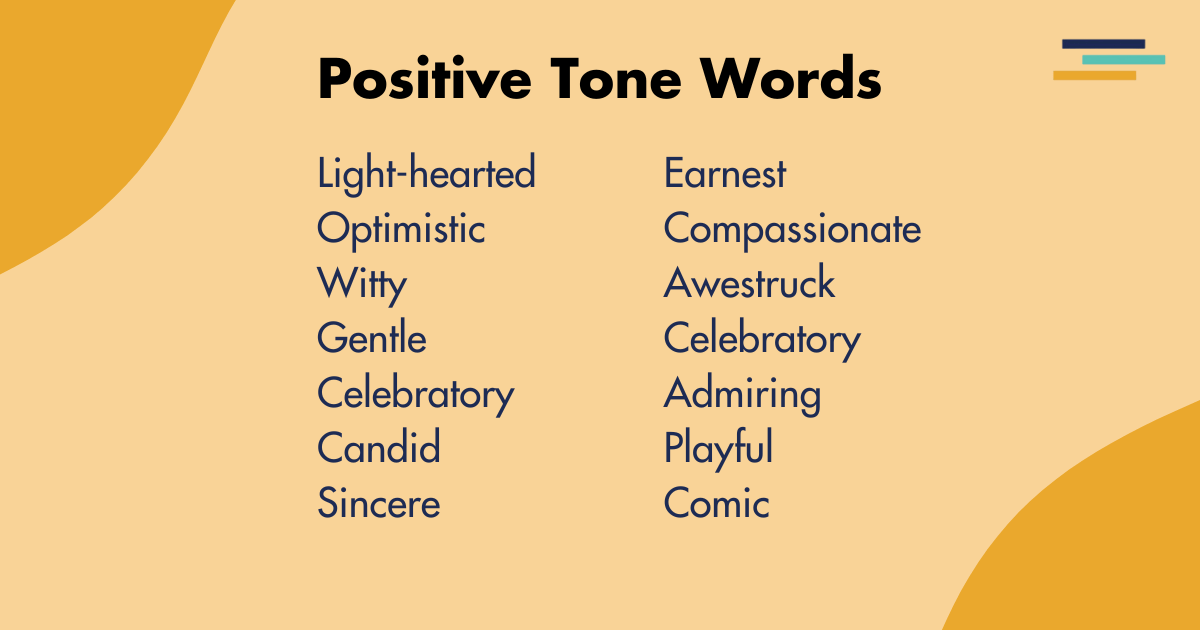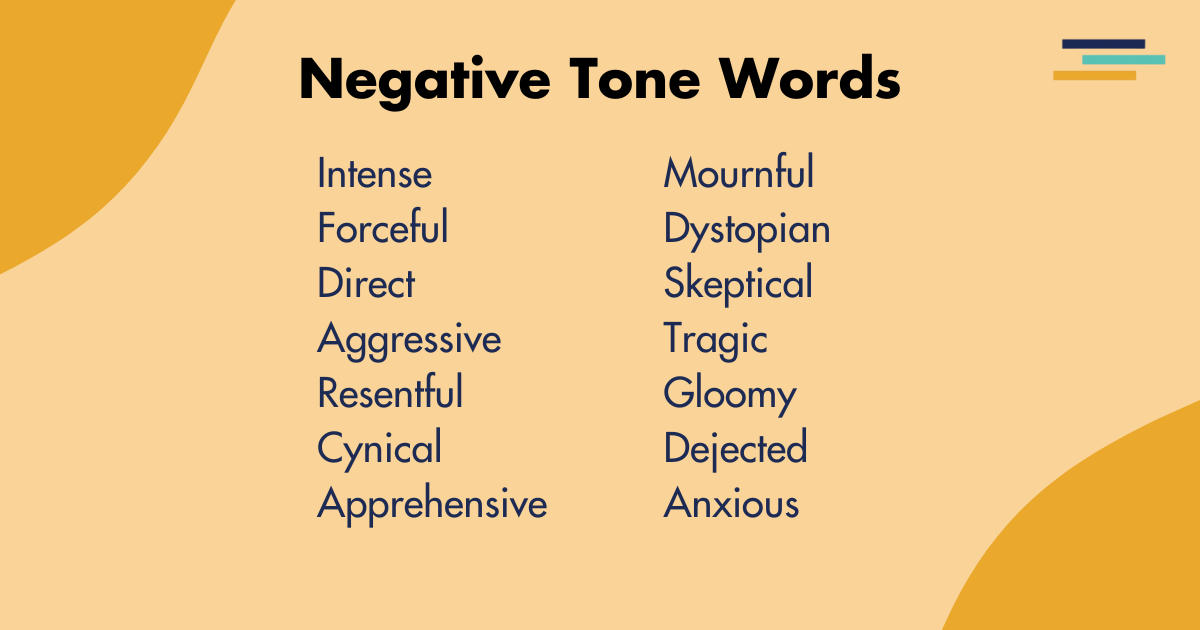
Essential, inevitable, and often misunderstood, tone impacts the reader. Using tone intentionally will elevate your writing. Everything you need to develop your expertise is here and in the WILDS.
Tone is the author’s attitude or feelings toward their subject and audience. Tone words are used to help express and understand that attitude. They are an essential tool for authors to help create mood in writing.
Take a free trial of Fictionary today and take your story to the next level.
To get a deeper understanding of how to recognize and create tone, we can look in the WILDS of the text. So, what or where are these WILDS?
Here are the details of a quick, easy acronym to help you remember the tools you have to help uncover tone. These ideas can also help you see the tone in your own writing and give you power to be intentional with your choices.
Word Choice or Diction: This is the writer’s choice of words. Diction may be formal or informal, obscure or familiar, ornate or plain, depending on the context or the writer’s purpose. It is clear that diction is essential in developing tone. The choice of words can help create differences for the characters in your story as well as for the tone throughout the book.
Imagery: I like to think of these as word pictures. Words that appeal to at least one of our senses. What senses has the writer chosen to create images with? How do those images give a sense of the author’s attitude?
Language: In a moment, we’ll take a deeper dive into the connotations of words. These are very important to understanding and creating tone. Look at the language to see if the tone is evident in the author’s choices.
Details (facts): What has the author chosen to include? What details has the author chosen to omit? What is included can give a strong sense of the author’s attitude toward the subject or character.
Syntax (sentence structure including fragments and ellipsis): Every language has expectations for the order of words to make the meaning of a sentence clear. We see unconventional syntax in poetry and dialogue. Syntax can also be used to impact the pacing of a story. Longer sentences can seem more academic and can slow the pace. Shorter sentences are seen more in casual speech and can create a quicker flow for the reader.
With WILDS, you have a guide to finding the tone within writing.
What Are Tones in Writing?
Tone words help express the attitude of the author toward the subject or the narrator toward the characters and plot.
Words can have positive, negative, or neutral connotations. Let’s take that deeper dive.
A connotation is the feeling or idea that a word evokes beyond the primary meaning. We can think of denotation as the dictionary definition of the word and connotation as the emotion evoked by the word.
Let’s look at some synonyms to get a sense of connotations. Synonyms have the same or very similar meanings in the dictionary definition.
Skinny, scrawny, and slim are all synonyms for thin. The difference comes in the connotation.
For example, skinny may be unusually or painfully thin, scrawny includes unattractively thin or bony, and slim can include the idea of gracefully thin.
These definitions give the primary meaning of being thin and the attitude or connotation evoked with the word choice.
So, tone words can help authors show whether they feel positively, negatively, or neutrally about the subject matter.
Can you sense the different tone in the following sentences?
- The writer lived in a house.
- The writer lived in a home.
- The writer lived in a hovel.
Tone focuses on the attitude of the writer to the subject matter. In fiction, this is seen in the narrator’s perception or judgment of the plot and characters. We can use tone to help understand the story’s theme or message.
If the tone is an author’s attitude toward the subject matter, what is mood? Mood is about the reader’s feelings and emotions evoked from the text. Mood brings the story to life through setting, plot, imagery, genre, and the text’s tone.
A writer can use tone to influence the feelings the story evokes in the reader.
Words we use to describe tone and mood can be the same. That doesn’t mean that the tone and mood of a story will be the same.
Consider these ideas when choosing your tone.
- Who is your audience?
- What do you want them to think?
- What do you want them to feel?
As you look back over the WILDS in your writing, consider your audience and what you want to evoke for them.
What follows is a list of tone words divided into three categories: positive, negative, and neutral. Which of these categories fits your intention? Go there. Each section is divided into more general groupings to help you hone in on the exact tone you want to create.

Positive Tone Words List
Let’s imagine you are writing about beets. You know you want to give the reader a clear feeling that you, the writer or narrator, has a positive attitude toward these beautiful red root vegetables.
Begin by glancing down to the section of positive words. Notice how different choices will take you down a different writing path. You narrow it down to admiring, awestruck and celebratory. Each of these positive tone words will lead to different choices in the WILDS.
Then you remember that your tone may change throughout the writing. You are inspired to begin with an admiring tone and end with a celebratory tone. This is going to be fun!
Humorous Tone Words
- Light-hearted: cheerful, carefree
- Comic: causing laughter, funny
- Playful: light-hearted, likes to have fun
- Mocking: making fun of someone or something in a cruel way
- Sarcastic: using irony to mock or show contempt
- Whimsical: playfully quaint and amusing
- Witty: cleverly humorous, quick
Positive Tone Words
- Optimistic: Hopeful and confident about the future
- Peaceful: tranquil
- Gentle: mild, kind, tender
- Admiring: approving
- Utopian: advocating ideal social and political ideas
- Appreciative: showing gratitude or pleasure
- Awestruck: full of wonder
- Celebratory: rejoice, commemorate
- Laudatory: praising, commending
Honest Tone Words
- Candid: truthful, straightforward
- Earnest: sincere
- Sincere: genuine, free from pretense
- Solemn: formal, dignified
Sympathetic Tone Words
- Benevolent: kind, generous
- Compassionate: caring
- Empathetic: feeling the emotions of others, caring
- Concerned: interested, connected

Negative Words to Describe Tone
Remember our example from the section on positive tone words? Writing about beets has a strong positive initial and ending tone.
But, you have an idea about beets that is more negative. You might be adding something about the way the color can stain or some other problem aspect of these complex roots.
So, you look through the sections and decide to focus on the critical tone. As you think about the stains on your hands and your favorite pair of white sneakers, you notice accusatory, disapproving, and incredulous. While the thought of your sneakers is making you want to point an accusing finger at those beets, you choose incredulous to capture your sense of disbelief.
This draft is taking shape. Tone is giving some ideas for the structure as well as word choice, imagery, language, details, and syntax.
Angry Tone Words
- Intense: extreme, strong, ardent
- Outraged: fiercely angry or indignant
- Forceful: powerful, assertive
- Antagonistic: in active opposition, hostile
- Regretful: remorseful, sorry
- Direct: blunt
- Aggressive: attacking
- Aggrieved: feeling resentful for unfair treatment
- Belligerent: angry, ready to fight
- Contemptuous: scornful
- Incensed: angry
- Indigent: annoyed or angry at unfair treatment
- Resentful: bitter
Negative Tone Words
- Pessimistic: hopeless, fear for the future
- Cynical: distrustful of sincerity or integrity
- Suspicious: distrustful
- Dystopian: imagining a future full of suffering and injustice
- Apprehensive: fearful
- Distrustful: suspicious
- Skeptical: not easily convinced, having doubts
Sad Tone Words
- Mournful: sadness, regret, grief
- Gloomy: depressing, dark
- Tragic: extreme sorrow
- Wretched: very unhappy
- Despairing: loss of all hope
- Miserable: unhappy
- Dejected: sad
- Crestfallen: sad and disappointed
- Anxious: worried, fearful
Fed-up Tone Words
- World-weary: apathetic, tired of the world
- Jaded: lacking interest due to overindulgence, having too much of something
- Disenchanted: disappointed in someone or something previously admired
- Disillusioned: disappointed that something is not as good as you hoped or thought
- Exhausted: tired
Tone Words That Suggest Something Bad Will Happen
- Ominous: threatening
- Foreboding: sense that something bad is going to happen
- Cautionary: warning
Tense Tone Words
- Desperate: hopeless
- Anxious: fearful, worried
- Apprehensive: worried about what might happen
- Worried: anxious or troubled
Critical Tone Words
- Accusatory: blaming
- Derisive: contempt, ridicule
- Disapproving: have an unfavorable opinion
- Disparaging: expressing that something is of little worth, derogatory
- Incredulous: unable to believe something
- Judgmental: critical
- Scathing: scornful, severely critical
Tone Words That Lack Feeling
- Callous: insensitive, cruel
- Apathetic: uncaring, no interest or enthusiasm
- Cold: uncaring
- Bitter: anger and disappointment about being treated unfairly
- Detached: uncaring, disconnected
- Dispassionate: not influenced by strong emotion, impartial
- Objective: not influenced by personal feelings or opinions
Dark Tone Words
- Ghoulish: unnatural interest in things like human suffering and death
- Macabre: disturbing, horrifying
- Grim: forbidding, uninviting
- Murky: dark, gloomy
- Sombre: dark, dull, gloomy
- Dreary: dull, bleak, lifeless, depressing
- Bleak: depressing, cold

Words to Describe an Author’s Tone
Without being particularly positive or negative, there are other ways to describe an author’s tone.
Let’s talk about those beets one last time. You want to build to that celebratory tone at the end, but all the words give a sense of trying too hard. That is not what you want.
You continue to search. It could be personal, or powerful, or paint a picture. Whether you decide to write a different section with those three different tones or use only one, you have been able to make thoughtful choices and create tone intentionally throughout your writing.
Tone Words That Are Open to Interpretation
- Curious: strange, unusual
- Ambiguous: open to more than one interpretation
- Ambivalent: having mixed feelings about something
- Speculative: based on conjecture, guess
- Subtle: difficult to analyze or describe
- Implicit: implied
- Evasive: avoiding direct answer or response
Tone Words That Recall the Past
- Reminiscent: reminding of something
- Nostalgic: longing for the past
- Yearning: strong desire for something
Personal Tone Words
- Confessional: revealing private thoughts and feelings
- Intimate: closely personal, familiar
- Pensive: deeply thoughtful
- Thoughtful: consideration of a topic, thought
- Sentimental: nostalgic and tender feeling
- Subjective: based on individual feelings and opinions
Conflicted Tone Words
- Sorrowful: full of sadness
- Haunted: feeling anguish or torment
- Unfulfilled: sense of missing something important, not complete
- Tense: sense of tightness due to anxiety or nervousness
- Disconnected: sense of separation
- Repentant: sincere regret or remorse
Tone Words That Teach a Lesson
- Didactic: intended to teach
- Sermonizing: deliver opinionated or dogmatic speech
- Moralizing: giving overly critical opinion of right or wrong, usually unfounded
- Perceptive: showing sensitive insight
- Provocative: deliberately causing annoyance or anger
- Allegorical: sharing a story that has a hidden meaning or moral
- Virtuous: showing high moral standards
Tone Words That Paint a Picture
- Evocative: bringing strong emotions or feelings to mind
- Depiction: representation through drawing or pictures
Powerful Tone Words
- Provocative: causing annoyance or anger
- Poignant: evoking sadness or regret
- Expressive: full of expression, meaningful
- Animated: full of life
- Emotive: appealing to or causing emotion
Tone Words That Appeal to All
- Universal: applicable to all
- Philosophical: relating to the study of the fundamental nature of knowledge, reality, and existence
- Realistic: having a practical idea of what can be achieved or expected
Persuasive Tone Words
- Imploring: making a desperate appeal
- Desperate: having little hope of success
- Begging: ask humbly for something
- Pleading: an earnest or emotional appeal
Why It’s Important to Include Different Tones in Writing
Tone can change throughout the text. Different characters and events will evoke a different attitude from the narrator. Like our beet example above, a shift in tone can help you develop your draft, help the reader understand the different aspects of a subject, and it can add variety to your writing.
Tone is a powerful tool that creates mood for the reader. Let’s end with a quick look at a few excerpts from published works to explore our understanding of how tone can be discovered and developed.
Pride and Prejudice by Jane Austen
“It is a truth universally acknowledged, that a single man in possession of a good fortune must be in want of a wife.
However little known the feelings or views of such a man may be on his first entering a neighborhood, this truth is so well fixed in the minds of the surrounding families that he is considered as the rightful property of some one or other of their daughters.”
Notice the highly formal language. The novel opens with a statement. The syntax of that first sentence and the word choice of “truth universally acknowledged” helps convey a sense of certainty. However, the narrator’s doubt and judgment become clear in the second paragraph showing that the man’s feelings or views are not considered at all. This is an important detail to understand the tone.
Together, these show the humour in the observations of the narrator. The narrator shares opinions and thoughts about the society with the reader. The tone changes throughout the story, as the narrator guides us through an understanding of the society and the relationships in the story.
The Great Gatsby by F. Scott Fitzgerald
“In my younger and more vulnerable years my father gave me some advice that I’ve been turning over in my mind ever since.
‘Whenever you feel like criticizing anyone,’ he told me, ‘just remember that all the people in this world haven’t had the advantages that you’ve had.’”
Here, the narrator begins with a conversational tone. There is a sense that the tone is reflective and slightly cynical with the use of the phrase “more vulnerable years.” This opening tone also prepares the reader for judgment of others and of society that come as Nick enters Daisy and Gatsby’s worlds.
As you read through the novel, the change in Nick’s tone carries the reader along for a beautiful if bumpy ride.
The Tell-Tale Heart by Edgar Allan Poe
“True!—nervous—very, very dreadfully nervous I had been and am; but why will you say that I am mad? The disease had sharpened my senses—not destroyed—not dulled them. Above all was the sense of hearing acute. I heard all things in the heaven and in the earth. I heard many things in hell. How, then, am I mad? Hearken! and observe how healthily—how calmly I can tell you the whole story.”
Right from the start, Poe sets a nervous and anxious tone. The tone is enhanced with the use of dashes and repetition. The reader is drawn into the sense of intensity and the threat of madness.
Remember, tone in writing is similar to tone in conversation. Your voice and body language give the listener a sense of your attitude.
You have the tools to be intentional as you create tone in your writing.
Do you have an overall tone for the work? What mood do you want to evoke in your readers? What language choices will be best to deliver that tone?
Remember to think about the choices you make in the WILDS. Word choice, imagery, language, details, and syntax are there to help you.



